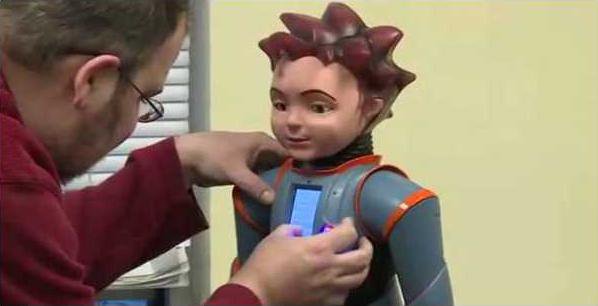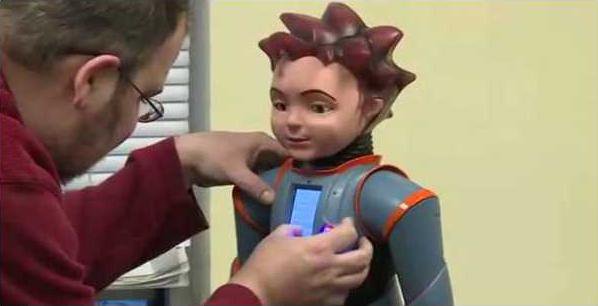Children with autism display greater success socializing after using social robots, according to research from RoboKind, a developer of social robots, reported Education News.
One social robot, Milo, was created to engage in social interactions with elementary and middle school age children. The robot encourages children to develop social skills.
Ive witnessed children who struggle with social situations immediately connect with Milo and reveal skills they had never before exhibited in human-led therapy sessions, said Pamela Rollins, associate professor at the University of Texas at Dallas, who presented the research at a National Press Club event.
Rollins, who has worked with the University of Texas at Dallas Callier Center for Communication Disorders, collaborated with RoboKind to produce Milo. She said although autistic kids struggle with social interactions, they are generally good with technology, reports CNN.
So Milo creates that bridge, where he is humanoid, has a human face, but is cartoonish so children in the spectrum are engaged with him," she said.
Milo speaks slower than the average human and has a range of facial expressions. The robot can repeat the same things again and again, with no signs of frustration, allowing children time to truly understand what they are taught, reports CNN.
The research Rollins directed compared childrens interactions with humans versus their interactions with social robots. Her findings suggested the robots improved childrens ability to read emotions and engage in social activity, according to Education World.
Rollins said the children who interacted with the social robot functioned higher than the children who did not engage with the robot. Generally the children who were not interacting with the robot were disengaged in the learning process, Education World reported.
Rollins concluded that this research offers hope for autistic children. Our research found that children with ASD are more engaged with Milo than with the therapist, especially when Milo was instructing them. And we know children who engaged learn better, because engagement equals learning, she said.
One social robot, Milo, was created to engage in social interactions with elementary and middle school age children. The robot encourages children to develop social skills.
Ive witnessed children who struggle with social situations immediately connect with Milo and reveal skills they had never before exhibited in human-led therapy sessions, said Pamela Rollins, associate professor at the University of Texas at Dallas, who presented the research at a National Press Club event.
Rollins, who has worked with the University of Texas at Dallas Callier Center for Communication Disorders, collaborated with RoboKind to produce Milo. She said although autistic kids struggle with social interactions, they are generally good with technology, reports CNN.
So Milo creates that bridge, where he is humanoid, has a human face, but is cartoonish so children in the spectrum are engaged with him," she said.
Milo speaks slower than the average human and has a range of facial expressions. The robot can repeat the same things again and again, with no signs of frustration, allowing children time to truly understand what they are taught, reports CNN.
The research Rollins directed compared childrens interactions with humans versus their interactions with social robots. Her findings suggested the robots improved childrens ability to read emotions and engage in social activity, according to Education World.
Rollins said the children who interacted with the social robot functioned higher than the children who did not engage with the robot. Generally the children who were not interacting with the robot were disengaged in the learning process, Education World reported.
Rollins concluded that this research offers hope for autistic children. Our research found that children with ASD are more engaged with Milo than with the therapist, especially when Milo was instructing them. And we know children who engaged learn better, because engagement equals learning, she said.





